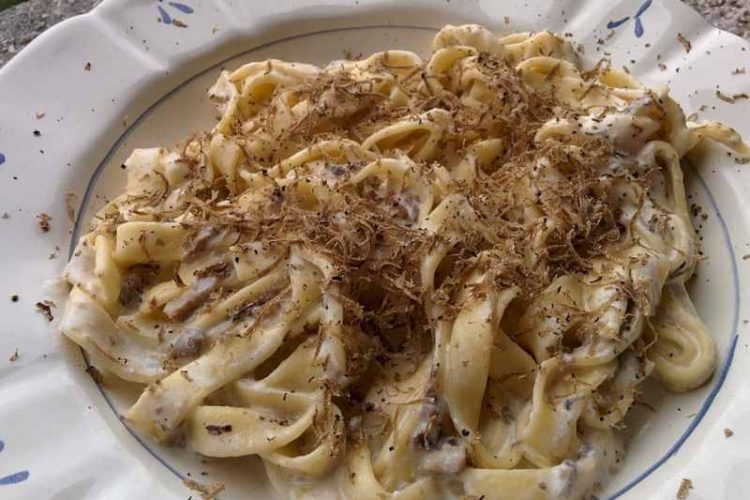Truffles are sought out and revered as an ingredient in many foods because of their intense flavor. Truffles transform simple fare such as pasta, eggs or bread to gourmet delights.
As with so many ingredients, fresh is always best. Choose truffles that are firm to the touch. Black truffles should be black inside and out. When buying fresh, it also helps to know a little about the grades and classification of truffles.
Grades and Classification of Truffles
Generally, there are three grades of truffles. Super Extra, as the name implies, is the largest and most expensive and found only on the most exclusive tables. Extra Grade, the next level, comes from the top ten percent of the total crop, while First Choice is the most common grade.
Classification is another way of judging truffles. They are known simply as winter and summer truffles. Those harvested in December and January are the most desirable because the aroma and flavor are strongest during the coldest months. Next are other winter-harvested truffles. Summer harvested truffles are seen as slightly inferior because the flavor is less intense but some chefs find this quite suitable for light summer meals. Because summer-harvested truffles are less expensive, some chefs also see this as an opportunity to introduce new dishes.

Varieties
There are many varieties of truffles. France and Italy have long been regarded as the very best countries for truffle production and French black and Italian white are the premier choices.
But as demand grows, Oregon and Australia are proving to be very capable producers as well. James Beard has given his stamp of approval to the Oregon truffle. Producers in Australia are adapting production for that country and shipping fresh truffles packed in glass containers that are surrounded by ice crystal packs to preserve freshness.
Two of the best-known Asian truffles are Chinese Black and Terfez. Terfez is highly perfumed and has been prized for thousands of years. It is known as the desert truffle and only appears in semi-arid regions after heavy rains.
Truffle production is possible in many areas where the right soil and tree combination come together. However, establishing a commercial crop takes a decade or longer.

In Recipes and As Garnish
Truffles are so highly prized because the rich flavor works well with so many other foods. They can be used as a garnish for pasta, eggs, vegetables and soups. A few thin sprinkles impart an incomparable flavor. Many popular recipes such as salmon with black truffles or Foie Gras with Truffles call for modest amounts of truffles when preparing. One dish, maccheroncini alla boscaiuol, calls up a romantic picture as the name translates to “pasta in the style of the wood-cutter’s wife” (mssf.org).
Even when fresh truffles are not available, cooks still have options. Truffle oil is a good way to add the flavor of truffles at a fraction of the cost. Truffle honey can be drizzled over bread or meat for a true Tuscan delight or used in basting meats. Truffle butter is another way to add flavor to ordinary foods, such as bread or baked potatoes. You can make your own truffle butter or buy already prepared. Preserved or frozen truffles are another option.
The finest truffles are wild grown and harvested. Those who know the best places use pigs or dogs to sniff out the underground fungus. Trifolau (truffle hunters) go to great lengths to keep secret the location of their traditional sites. Truffles are harvested by gently removing the soil then selecting only those deemed mature enough.
